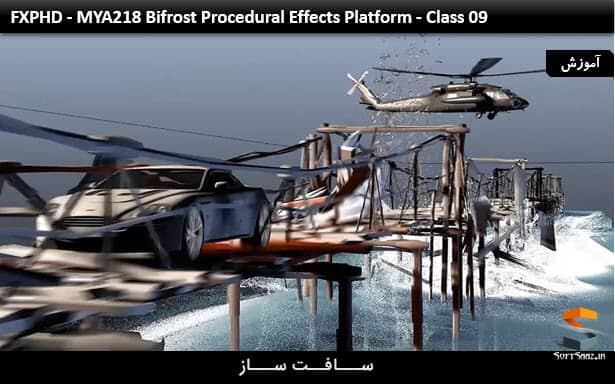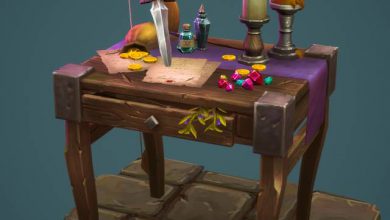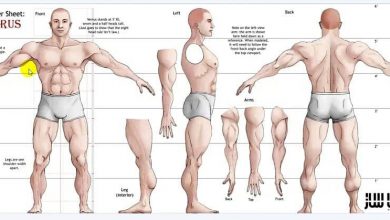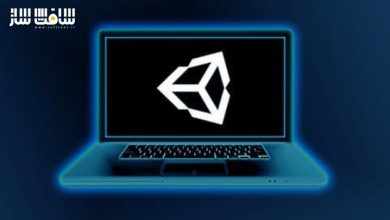آموزش افکت های رویه ایی در Maya
MYA218 Bifrost Procedural Effects Platform - Class 09
آموزش افکت های رویه ایی در Maya
در این دوره به آموزش افکت های رویه ایی در Maya میپردازیم. BiFrost یک پلتفرم افکت رویه ای می باشد که به شما اجازه می دهد تا تصویری با شبیه سازی مایع واقعی را در مایا ایجاد کنید. این روش، از تکنولوژی renowned Naiad مشهور الهام گرفته است که در بسیاری از فیلم های پرفروش که شامل افکتهای آبی بزرگ می باشد استفاده می شود.
بیوفرست ابزاری برای شبیه سازی مایع مقیاس پذیر می باشد که سبب ارتقای سطح هنرمندان می شود و با استفاده از آن میتوان ورک فلوهای موثر و ساده ایجاد نمایید. در این دوره اموزشی نحوه ترکیب اکسلیتور های BiFrost ، ذرات مبتنی بر دراپلت ها و برخورد اشیا را برای ایجاد تمامی انواع مایعات ، مانند پاشیدگی مایعات و موج ها و در نهایت نمایش افکت هایی از هماهنگی آنها در ویو پورت 2.0 در مایا را آموزش میدهیم.
برای هر تولید کننده مایا یا FX TD، بیفراست یک ابزار ارزشمند برای تولید شبیه سازی جامد واقعی با جزئیات کامل را ارائه میدهد. در طول این دوره آموزش افکت های رویه ایی در Maya که توسط سایت سافت ساز ارائه میشود ، تمامی نواحی یک نرم افزار جدید شامل شبیه سازی پیش زمینه، کانتینر های جامد، امیترها، کالیدرها، کیلپلینز ها، دراپلت های Bifröst، تشخیص رنگ، صفات بیوفرست پینتینگ، تنظیم صفات شیدر، افزایش دقت و وضوح تصویر، شبیه سازی های رندرینگ و مشینگ توضیح داده می شود.
هم چنین نکاتی در مورد کار بر اساس کامنتهای مستقیم برای نهایی سازی یک شات را مورد بررسی قرار میدهیم. در طول این آموزش افکت های رویه ایی در Maya درکی کلی از Autodesk Bifröst و نحوه تولید شبیه سازی با جزئیات بالا و کارامد خواهید داشت. با سافت ساز همراه باشید.
پیش نمایش آموزش افکت های رویه ایی در Maya :
عنوان دوره : FXPHD – MYA218 Bifrost Procedural Effects Platform – Class 09
سطح : مناسب برای همه
زمان کل دوره : – ساعت
تعداد فایل های تصویری : 1
سال آموزش : 78
فایل تمرینی : ندارد
مربی دوره : Liam Whitehouse
نرم افزار : Maya 2015
زیرنویس : ندارد
FXPHD – MYA218 Bifrost Procedural Effects Platform – Class 09
Bifröst is a procedural effects platform that lets you generate photo realistic liquid simulations in Maya. Developed from the renowned Naiad technology, which has been used in many of the best blockbuster feature films including large scale water effects, Bifröst was designed to provide artists with powerful and scalable liquid simulation tools using simple and efficient workflows. In this course we will learn how to Combine Bifröst accelerators, particle-based droplets and collision objects to create all types of liquids, like splashes and waves then preview the effect interactively in Viewport 2.0 in Maya. For any FX TD or Maya Generalist Bifröst will become an invaluable tool to create realistic fluid simulations at high detail. During this course we will be covering all the main areas of the new software including, background simulating, fluid containers, emitters, colliders, killplanes, setting attributes, Bifröst droplets, diagnostic colours, painting Bifröst attributes, adjusting shader attributes, increasing accuracy and resolution, meshing and rendering simulations. As well as tips on how to iteratively work according to directors comments to final a shot. By the end of the course you’ll have a firm understanding of Autodesk Bifröst and how to produce amazing high detail simulations efficiently.
1-Introduction to fluid simulation for Computer Generated Visual Effects. Overview of fluid simulation terminology. Explanation of workflows for different fluid simulation software. Advantages and disadvantages of fluid simulation usage.
2-Introduction to Bifrost Procedural liquid simulation solver. How to import a Bifrost demo scene. Overview of workflow for Bifrost simulations in Maya Setup of example scene and rundown of Bifrost attributes.
3-How to setup a new Bifrost liquid simulation using geometry. How scene scale effects your water simulation in Maya. How to enable and disable the Bifrost simulation and collision objects. How to change the voxel size of the simulation to adjust its detail and viewing the simulation in the viewport 2.0.
4-Overview of Bifrost Killplanes and why they are important. How to work with Bifrost Emitters. How they are different to particle emitters and what their purpose is in Bifrost workflows.
5-Working with Bifrost Colliders. Overview of setting up the collider objects in a Bifrost simulation in Maya. Working with Bifrost Accelerators. Explaining what accelerators do and how to use them in Bifrost simulations.
6-Working full scale with the bridge chase and destruction scene.
7-How to paint Bifrost attributes. Adjusting the attributes of a Bifrost simulation by using Maya’s paint attributes tools. How to work with Bifrost droplets. Understanding how Bifrost droplets work and how memory overhead can be reduced by adjusting the settings for droplets in Bifrost simulations.
8-How to generate a Bifrost user cache for a final simulation. A Bifrost cache is a disk based saved setup for a simulation which can be rendered on a render-farm or rendered locally. How to setup and adjust shader attributes. You can manipulate the shader attributes to change the look of a Bifrost simulation. This can involve adjusting the different render passes that are output for the simulation, or changing the way particle data is handed over to the rendering engine to compute effects like foam or spray colour differences to the main water or fluid surface.
9-Meshing and rendering your scene. The meshing of particle fluid simulations is a very geometrically heavy process and is best done at rendertime. Also the motion blur of fast moving liquid particles is very important, and artists must setup their scenes so that not only is there areas of smooth unbroken liquid but also sprays of highly detailed motion blurred droplets.
10-How to iterate your simulations for the Director. One of the hardest and most challenging aspects of a highly detailed fluid simulation is how to plan out and “direct” the movement of the fluid to do what the director wants after the initial “first pass” is completed. This lesson will take us through the process of iteratively changing the simulation based on a directors feedback notes.
حجم کل :

برای دسترسی به کل محتویات سایت عضو ویژه سایت شوید
برای نمایش این مطلب و دسترسی به هزاران مطالب آموزشی نسبت به تهیه اکانت ویژه از لینک زیر اقدام کنید .
دریافت اشتراک ویژه
مزیت های عضویت ویژه :
- دسترسی به همه مطالب سافت ساز
- آپدیت روزانه مطالب سایت از بهترین سایت های سی جی
- ورود نامحدود کاربران از هر دیوایسی
- دسترسی به آموزش نصب کامل پلاگین ها و نرم افزار ها
اگر در تهیه اشتراک ویژه مشکل دارید میتونید از این لینک راهنمایی تهیه اشتراک ویژه رو مطالعه کنید . لینک راهنما
For International user, You can also stay connected with online support. email : info@softsaaz.ir telegram : @SoftSaaz
امتیاز به این مطلب :
امتیاز سافت ساز - 83%
83%
لطفا به این مطلب امتیاز دهید :)






